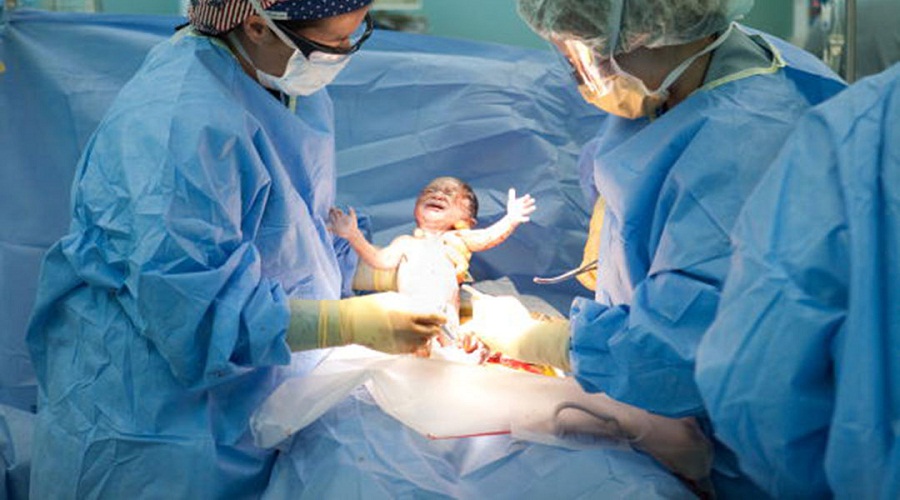What Is a C-Section?
A cesarean section — more commonly known as C-section — is the surgical delivery of a baby. It involves one incision in the mother’s abdomen and another in the uterus.
It is a common procedure that is used to deliver about 1 in 5 babies.
C-sections are generally avoided before 39 weeks of pregnancy so the child has proper time to develop in the womb. Sometimes, however, complications arise and a C-section must be performed prior to 39 weeks.
Why a C-Section Is Done
A C-section is typically performed when complications from pregnancy make traditional vaginal birth difficult, or puts the mother or child at risk. Sometimes C-sections are planned early in the pregnancy, but they are most often performed when complications arise during labor.
Reasons for a C-section delivery include:
- baby has developmental conditions
- baby’s head is too big for the birth canal
- the baby is coming out feet first (breech birth)
- early pregnancy complications
- mother’s health problems, such as high blood pressure or unstable heart disease
- mother has active genital herpes that could be transmitted to the baby
- previous C-section delivery
- problems with the placenta, such as placental abruption or placenta previa
- problems with the umbilical cord
- reduced oxygen supply to the baby
- stalled labor
- the baby is coming out shoulder first (transverse labor)
The Risks of a C-Section
A C-section is becoming a more common delivery type, but it is still a major surgery that carries risks for both mother and child. The risks of a C-section include:
- bleeding
- blood clots
- breathing problems for the child, especially if done before 39 weeks of pregnancy
- increased risks for future pregnancies
- infection
- injury to the child during surgery
- longer recovery time compared with vaginal birth
- surgical injury to other organs
You and your doctor will discuss your birthing options before your due date. Your doctor will also be able to determine if you or your baby are showing any signs of complications that would require a C-section delivery.
How to Prepare for a C-Section
If you and your doctor decide that a C-section is the best option for delivery, your doctor will give you complete instructions about what you can do to lower your risk of complications and have a successful C-section.
As with any pregnancy, prenatal appointments will involve many checkups, which will include blood tests and other examinations to determine your health for the possibility of a C-section.
Your doctor will make sure to record your blood type in case you need a blood transfusion during the surgery. Blood transfusions are rarely needed during a C-section, but your doctor will be prepared for any complications during the surgery.
Even if you aren’t planning to have a C-section, you should always prepare for the unexpected. At prenatal appointments with your doctor, discuss your risk factors for a C-section and what you can do to lower them.
Make sure all of your questions are answered, and that you understand what could happen if you need to have an emergency C-section before your due date.
Because a C-section takes additional time to recover from than normal birth, arranging to have an extra set of hands around the house will be helpful. Not only will you be recovering from surgery, but your new baby will need some attention as well.
